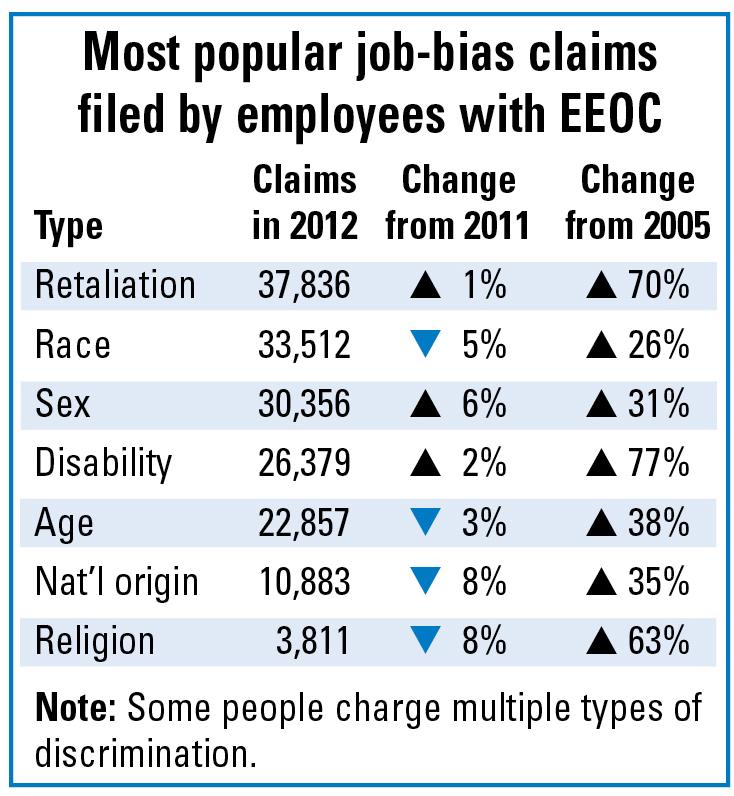Retaliation: Your #1 risk in job-bias lawsuits
Supervisors in your organization probably know it’s illegal to discriminate based on race, age, sex, religion or disability. But apparently far fewer realize those same federal laws also make it illegal to retaliate against people for voicing complaints about such discrimination.
Employees (and their lawyers) are certainly becoming aware of their rights.
For the third year in a row, retaliation is the No. 1 type of job discrimination claim filed with the EEOC. Employees submitted 37,836 retaliation claims in 2012. That’s only a small increase from 2011, but up more than 70% since 2005 and 100% since 1998.
Why the jump? The Supreme Court rewrote the definition of “retaliation” a few years ago, making it easier for employees to get retaliation cases into court. Plus, workers now routinely tack retaliation claims onto their age-, sex- or race-bias complaints to the EEOC.

The law: EEOC rules clearly say that employers “may not fire, demote, harass or otherwise ‘retaliate’ against an individual for filing a charge of discrimination, participating in a discrimination proceeding or otherwise opposing discrimination.”
Advice: Don’t give employees any reason to file retaliation claims. Before taking disciplinary action against people who’ve complained about discrimination (either formally or informally), supervisors and HR should ask themselves:
- “Why am I taking this action now?” Scrutinize the reason and timing of the action. Is there any connection to the person’s complaint? If it smells at all like retaliation, a jury could see it that way, too.
- “Would I take this action with my best employee?” If your answer is “no,” you could be open to a retaliation charge. If it’s “yes,” docu-ment the basis for your decision.
3 best practices
- Put retaliation on managers’ radar screens. Clarify in policies that it’s unlawful to retaliate against anyone who exercises their legally protected rights. That includes everything from taking FMLA leave to filing a discrimination charge to going out on workers’ comp.
- Have experts review complaints. All complaints that might give rise to retaliation claims should be funneled to a senior group that will determine the existence of “protected activity,” decide on a response and guide supervisors.
- Use performance management. In court, retaliation cases often hinge on the timing of negative appraisals and discipline. Be prepared to show that managers followed a clear performance-management process and any negative feedback or reviews were in writing before the employee engaged in protected activity.
Online resource: The best tool for managers to prevent (and defeat) retaliation claims is a simple performance log system. Find six tips on creating a performance log, plus a list of what to include, in “Use performance logs to simplify employee reviews.”





